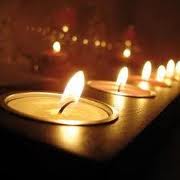MASSAGE TANTRIQUE A NICE, Monaco,Cannes
- Par glamourous-men-institut
- Le lundi, 11 avril 2022
J'ai écrit brièvement ce que Tantra signifie pour moi,voici ce que d'autres professeurs Tantra dans le monde entier en pensent.
More on Tantra
The History of Yoga and Tantra
The cradle of all religions - even of Christianity - lies in India. In India there exist numerous different religions and cults that exist in harmony together. The basic assumption is: there is only one divine energy but many different paths to experience and express this divinity. Jesus for example is seen as just one of many prophets.
- Between 3.000 and 1.800 b. c. there exists a prearian Indian culture with a mother cult. This is more African and ritual in nature. The female aspect with its fertile energy is worshipped. The term "shaktism" from "Shakti" (the female aspect) is created.
- After 1.800 b. c. the Arian people move in waves from the west to north India. Their belief system has a more patriarchal structure and includes the concept of reincarnation including the structure of casts with its four-structured class-system. The highest cast is the Brahman priests, the lowest are the so called untouchables.
- Between 1.500 and 900 b. c. the Indian Vedas develops and flowers. Natural spirits and gods are worshipped and sacrificed for; for example Agni - the fire, Vayu - the wind or Yama - the god of death. Ritual words and prayers (mantras) are used.
- From 900 to 300 b. c. the Brahmanism develops with its law of Karma (the circle of reincarnations). It is the so called law of cause and effect: "Everything you cause has an effect". Effects are not understood in the sense of punishment but more as learning experiences for the purpose of ultimately liberating oneself from the circle (Moksha). From this desire arose the highest possible goal in Indian philosophy: the liberation of all desires. In that time the highly evolved Upanishad-scriptures with its Vedanta philosophy (teaching of non-duality) were written. In the Vedanta philosophy life was regarded as a "divine play" (Leela).
- 560 to 480 b. c. was the time of Siddharta Gautama, the historical Buddha (the awakened) who lived first as a prince in luxury, then went into asceticism and finally with 35 years found enlightenment by following the "middle way". After that he travelled around and taught for over 40 years. He held a number of highly intelligent speeches and transmitted many different meditation techniques that are leading towards enlightenment.
- From 300 b. c. the so called Hinduism developed with its many different deities that are worshipped individually. Each deity represents one aspect of the divine whole. The most famous deities are Shiva, Vishnu, Krishna, Rama, Radhu, Lakshmi, Rudra and Ganesha. There are many statures existing from these deities.
- About the year 0 Patanjali wrote the famous Yoga-Sutra (Sutra = teaching scripture). He was teaching the classical Yoga with its eight-folded path (Ashtangha Yoga or Raja Yoga). It proposes a step by step development by following guidelines for daily living. The eight steps are called:
- Yama (prohibitions)
- Niyama (commands)
- Asana (body positions)
- Pranayama (breath exercises)
- Pratyahara (pulling back the senses)
- Dharana (concentration)
- Dhyana (meditation) und
- Samadhi (enlightenment).
In this Yoga presents itself as the counterpart to Vedanta. While Yoga says that you are separate from God and have to reunite, Vedanta on the contrary says that you are already one with god. You just have to recognize this. - About the year 200 the Bhagavad Gita - a form of bible for the Indian - is written. In it god Krishna points out the four different paths to liberation to the questioning hero Arjuna: Karma Yoga (selfless acting and serving in the world without being focused on a goal), Bhakti Yoga (devotion and ritual worship of god with the key prayer: „Thy will may happen! “), Jnana Yoga (self-realization with the question „Who am I? “), Raja Yoga (path of contemplation and meditation). Krishna advises everybody to find his unique way among these proposals. Krishna’s favorite animal was the cow, therefore this is regarded to as a holy animal in India.
- About the year 500 Tantrism (or Tantra Yoga) develops, especially in Nepal, Assam, Bengali and Khajuraho. Tantra arises as a revolution in the Indian spirituality by teaching liberation through celebration, enjoyment and getting rid of morality. Meat and wine is consumed, graveyards are used as meeting places and sexual union is celebrated even with the so called "untouchables" from the lowest cast. The human body is worshipped as god itself (Shiva/Shakti). Then and now Tantra remains as a rebellious spiritual and anti moral for a small number of people. The tantric concept is: God will be reached by joy and by using the sexual energy.
- About 1000 is the flowering of the Vamacara Tantra, the left handed tantric path of concretely practiced sensuality and sexuality. Roughly said the flowering of Tantra was about 600 to 1200, so lasting for about 600 years. After that time the left handed Tantra nearly vanished until today. The so called right handed path (Dakshinacara Tantra) was more philosophical and ascetic (Dakshina = right, polite, decent; Vama = left, hard, dirty).
- Between 1100 and 1200 the Kularnava Tantra and the Mahacinacara Tantra arise in the cults of the Kaula and Kula and become the most important of the roundabout 200 shivaitic tantras. In their scriptures you find detailed descriptions about orgiastic rites combined with drugs and sexual interactions in a spiritual context.
- About 1500 the Hatha Yoga Pradipika, an ascetic Yoga - scripture, is written and teaches liberation through body and breath exercises. The founder of Hatha Yoga is Matsyendra. ·
- In 1892 the Indian Yogi and student of Ramakrishna, Vivekananda speaks at the world congress of religions in Chicago about the universal religion and thus generates a worldwide interest in Indian philosophy. This is the beginning of spreading the four Yoga paths in the US and later in Europe.
- About 1970 the tantric philosophy mixed with western psychology is spread in the west by the Indian guru Bhagwan Shree Rajneesh (today Osho) and his student Margo Anand. The French therapist awakens the interest for modern people by books and workshops and initiates the development of the so-called Neo Tantra.
- About 2000 this Neo Tantra is starting to spread as largely as yoga some 20 years earlier
By Nils Kreidner, Tantra Coach and Tantra School director in Germany and guest facilitator with Leandra in South Africa
Taken from his website: Sahaja Tantra School - http://www.sahaja-tantra.de/eng/tantra-knowledge.ht
reflexologie plantaire Onglerie nice Épilation nice Institut de Beauté pour hommes Nice Institut pour l'Homme dominatrice nice massage suédois domination nice massage sensuel massage nu massage erotique Palper rouler nice spa massage nice massages à nice massage tantrique soins esthétiques niceamincissement amincissement nice aux huiles essentielles : shiats beauté des mains beauté des pieds beaute Remise en forme nice massage tantrique paca massage tantrique alpes maritimes massage tantrique french riviera Remise en forme nicemassage tantrique a nice cannes massage tantrique a monaco massage tantrique a cannes massage nu nice massage sensuel nice MASSEUSE 06 mASSEUSE PACA mASSEUSE NICE nice massage naturiste monaco massage tantrique a nice massage erotique nice soins massages sur nice nude massage massage erotic massage Sysmi fitness nice Epilation intime nice Epilation intégrale nice Shiatsu nice Epilation homme nice


